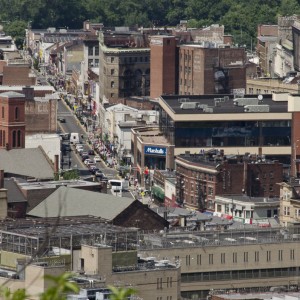
Twice daily for seven years, I traversed the suburbs of Northern New Jersey on NJ Transit’s Main Line on my way to and from school. My journey began across from my home in the wetlands area of Secaucus and ended in the preened suburb of Ridgewood. I grew to memorize the sequence of towns I would pass in the voice of the train’s automaton announcer: Kingsland, Delawanna, Passaic, Clifton, Paterson, Hawthorne, Glen Rock, Ridgewood. I was fascinated by the changes in landscape from city to city, the most drastic of which occurred while passing through Paterson. Suddenly, the town station no longer overlooked comfortable suburban streets but rather looming factory remnants, blue rows of abandoned silk mills, and a bustling downtown area shadowed by mountains. The cultural makeup of the train shifted from a crowd of mostly-white businessmen to a multicultural diaspora of African-Americans, Peruvians, Arabs, and Latinos of all ages. Paterson was a sharp contrast to its upper class Bergen county neighbors, but I never understood why.
When I took my writing seminar on tragedy, I approached my final research project thinking about interpersonal relationships and wanting to write about something that was personally meaningful. I turned to public transportation, one of my favorite topics. I reread my blog about conversations with colorful commuters on New Jersey trains. Because I was already thinking about places of disconnect, my personal curiosity about Paterson spiked. How did it change from America’s wealthiest town to one of its poorest? What did residents experience, nestled in an otherwise pristine area of New Jersey? As in most research motivated by personal curiosity, I knew a bit of luck was key. I did not know whether literature on Paterson and theories I could apply to it even existed. Continue reading Pondering Paterson: Personal Curiosity as Academic Research

